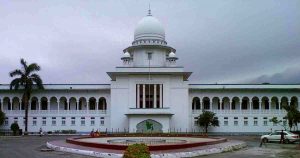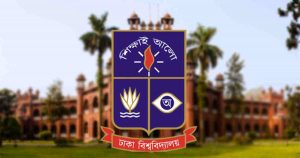Masum Billah
The planning and developing wing of directorate of secondary and higher education has revealed a report tiled institutional self-assessment summery 2014 at the National Academy for Educational Management (NAEM) conference hall recently. With a view to finding out the performance of schools ISAS ranked all the secondary schools under A, B, C, D and E categories describing them as top performing, well performing, moderate performing, poor performing and non-performing respectively. It’s a very laudable step on the part of DSHE. We are very much pleased with such a kind of job done by the directorate as this institution is seen and known mainly to control and run the administrative affairs in secondary and higher education giving hardly any importance to improvement of the quality of education. We expect that DSHE must have a very strong wing to ensure the quality of education and the recent initiative shows us that kind of hope.Seven performance-based management indicators and 45 sub-indicators including teaching learning environment, head teacher leadership, institution management committee, teachers’ professionalism, student performance, co-curricular activities plus teacher, community and guardian relationship were used and considered to measure the performances of secondary schools both government and non-government, rural and urban. These factors we know influence the teaching learning situation of our educational institutions. It shows that only 1020 secondary schools out of 18425 are in the top performing ‘A’ category and in percentage it come to only 5.54. Definitely it’s a poor percentage. This assessment has been done zone wise. There are nine zones of education at this level and its picture goes like this– Dhaka has 243 ‘A’ category schools out of 2416, Rajshahi 179 out of 2891, Barisal lowest ‘A’ category schools that is 23 out of 1609, Chittagong 89 out of 1573, Comilla 151 out of 1264, Khulna 96 out of 2683, Mymensingh 132 out of 2118, Rangpur 69 out of 3024 and Sylhet 38 out of 847 schools. The report says most of the schools are under B, and C categories. In nine zones 9098 schools fall in B category and 7319 schools in C category. The number of ‘A’ category secondary girls schools is 155 out of 3165 and ‘B’ category 1436 and 1340 ‘C’ category in the country.
According to individual indicator the picture shows 1820 schools fall under ‘A’ category having teaching learning environment and its percentage stands at 9.98. Out of these schools 674 (3.66 percent) have student performance, 4866 (26.41 percent) co-curricular activities, 7630 ( 41.41 percent) the role of a school management committee and 3990 schools have teacher performance. It is learnt that government schools show a very disheartening picture in this assessment. In spite of having almost all the facilities considered in the assessment, there are only 95 schools (30 percent) out of 317 are under ‘A’ category. 159 government schools fall under B and 62 school in C category. If these 317 schools have been considered keeping pace with the total secondary schools, this percentage might have been more frustrating. It definitely gives a clear message for us and for the whole nation. Government schools are not well supervised. Urban and rural divide and digital divide are some points which need to be considered when this sort of assessment is done. There may have been a little improvement in the gap between urban and rural schools; still a lot of things need to be done. Again, the situation in the coastal areas, haor and the hill tracts is the worst though it is assumed and known, the report has further revealed it. So, these vulnerable areas need to be focussed further and a different mechanism must be established for these areas.
The secondary school assessment of DHSE reminds us of the Programme for International Student Assessment (PISA) which is a highly respected educational assessment program aiming at assessing the competencies of fifteen-years-olds in reading, mathematics and science. According to PISA publications, Finland is now considered a major international leader in education. According to PISA report, Finland has done remarkably well in all PISA assessments over the past decade and its performance is notable for its consistency across schools. In Finland, the gap between top and bottom achieving students is unusually modest. Within this system, children do not start school until they are seven; they rarely take examinations or do homework before they are into their teens and are not measured at all for the first six years of their education. But what we do? Our students start going under the pressure of examinations since their childhood. Examination fear turns them into mental patients. Giving homework to the young kids is considered a good performance of a teacher which definitely is a wrong notion. When value this system to make the school hours for the kids very enjoyable?
According to the Organisation for Economic Cooperation and Development (OECD) report, both regular class teacher (grades one to six) and subject teachers (from seven to nine) enjoy enormous degree of autonomy and the national core curriculum functions as more of a guideline where teachers are free to decide what they will teach and how they select their own textbooks and other instructional materials and assessments in Finnish schools are a classroom responsibility. However, a significant focus in Finnish education is also on assisting students to learn how to assess their own learning. In our education there is no such arrangement or system through which pupils can evaluate their own learning. May I request the ministry of education in particular and NCTB and DSHE in general to think of such a mode of assessment?
Finland is not among the high spending per pupil OECD countries, but nearly all of the money spent on education is focussed on schools and classrooms. It undeniably retains much room for us to learn. Teachers are given the same status as doctors and lawyers in Finland and prospective teaching candidates are required to go through a teacher preparation programme where they are expected to learn through research based dissertation and there is a strong focus on developing pedagogical content knowledge. They also receive good training on diagnosing students with learning difficulties and are required to complete a clinical component as part of the programme. Our teachers recently have started receiving training, but they hardly develop such kind of diagnostic ability to identity the real weakness of the pupils and take measures accordingly. At least in better known and financially solvent schools we may have this option. The national evaluation council of Finland is focussed more on the evaluation of national policies rather than the performance of the schools. There is a national matriculation examination like our SSC at the end of the upper secondary school but its role is to certify what the students know and not to assess the quality of his or her school. At this stage we may not reach up to this level, but in future we must have this kind of assessment which will tell what the students really know and learn.
(Masum Billah, programme manager, BRAC Education Programme and vice-president: Bangladesh English Language Teachers Association (BELTA) Email: masumbillah65@gmail.com)




